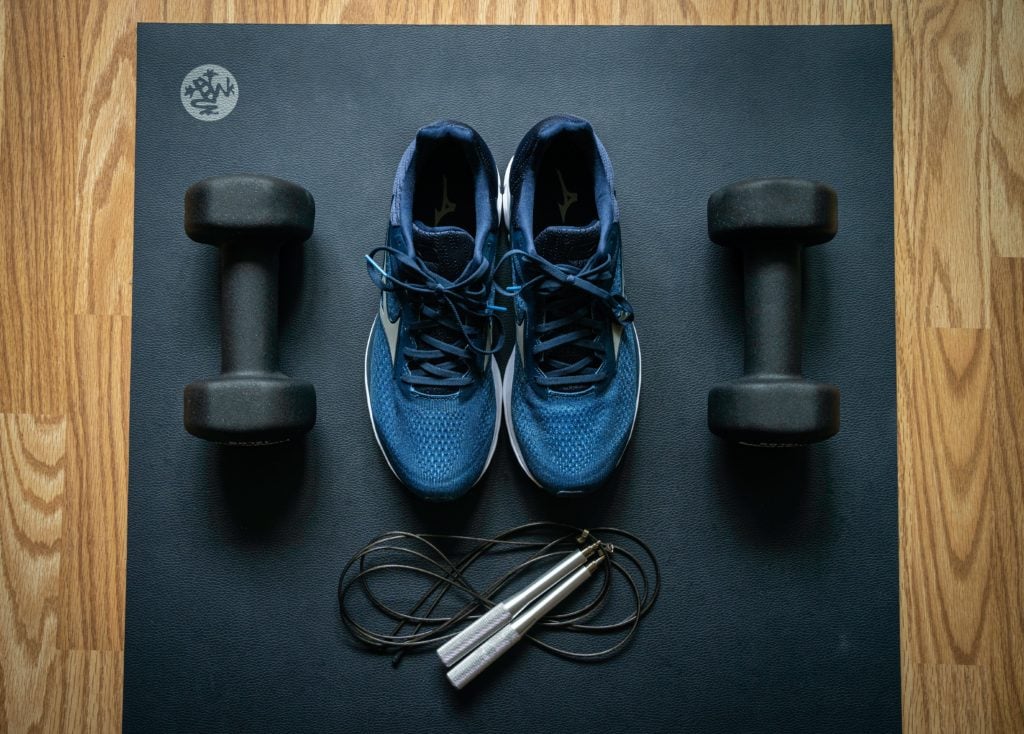How to Start Lifting Weights at Any Age (Workout 101)

No matter your age, lifting weights should be a part of your regular routine. With the vast benefits across the board, it’s probably the number one way to boost your health and happiness simultaneously.
What Happens to Your Body As You Age?
It’s hard to see all the changes our bodies go through as we get older, often because they are so gradual. But, at a certain point, if you don’t make some serious moves to keep (and gain) muscles, you will probably start noticing some of the following:
- Losing weight seems to be more difficult
- You notice you’re not quite as flexible as you used to be
- You’re gaining weight in new spots that never used to be problem areas
- Things you used to lift easily seem to be heavier these days
- Your joints are painful
- That high-school athlete shape you used to flaunt seems to have softened up
- You just don’t have the stamina you used to have
Use It or Lose It
“Use it or lose it” isn’t just a silly phrase. It’s true to form when it comes to you, your health, and your muscle mass. Science shows that we naturally lose muscle as we age. In fact, it’s so much of a “sure thing” that there’s even a scientific term for it: “sarcopenia.”
According to Pub Med, the definition of sarcopenia is: “… a condition characterized by loss of skeletal muscle mass and function… sarcopenia is a syndrome characterized by progressive and generalized loss of skeletal muscle mass and strength. It is strictly correlated with physical disability, poor quality of life, and death.”
The bottom line here is that it’s essential that you work your muscles religiously if you want to stay healthy and functional throughout your life. Keeping the muscle mass you have at the very least is vital, and it’s even better to add to it.
Other Benefits of Losing Weights
Besides the fact that you want to avoid sarcopenia as much as possible, there are other reasons adding muscle tissue to your body is a great idea.
- You’ll be more self-sufficient—for instance, you’ll be able to bring in your own groceries and move things around the house. Functional independence is key.
- Stronger muscles mean more stability and less chance of falling.
- And if you do fall, your bones will be stronger because of all the lifting. Weightlifting is a proven bone-strengthening activity.
- You’ll improve your overall health markers, too, which can increase insulin sensitivity, lower blood pressure, prevent and manage type 2 diabetes, lower the bad cholesterol and improve the good, increase bone density, ease depression, boost self-esteem, and more.
- Manage your body fat! Muscle tissue burns calories. Translation: the more muscle you build, the more calories your body needs and the more you can eat without putting on bodyfat. That alone should cause you to rush out to the nearest gym immediately!
When Should You Start Lifting Weights?
So, you’re convinced you should be doing some form of resistance training. How soon should you start? Yesterday! It’s never too soon (or too late) to get started on something as beneficial as strength training. Children as young as seven can start supervised resistance training, and so can seniors of every age. It’s an activity that everyone can enjoy and which all ages can participate in.
How to Get Started Lifting Weights
1. Start slowly—now is not the time to rush into things. Studies show that as little as 30 to 60 minutes a week of strength training may be enough to reverse the negative effects of sarcopenia.
2. Find a mentor—emulating someone who has already gone through all the learning curves and training is a must. It’s very important to learn technique properly because you will build upon what you’re doing in the future. If your form is off, you can get injured or develop unbalanced muscles. Find a personal trainer or a friend who’s an old pro in the gym to help show you the ropes. Or, there are many websites and fitness apps you can use as well to learn proper lifting techniques.
3. Focus on form, not weight—the amount of weight you’re lifting won’t matter as much as your form, especially when you’re just starting to lift weights. Learn the basics before you try to increase weight.
4. Work on progressive training—what is progressive training? It’s when you aim to do something more with each workout than you did the time before. For example, you might try to lift a little more weight each time you work your shoulders. Or, you might try to add a couple of repetitions to the current weight you’re lifting. You could also shorten your rest times in-between sets or superset (i.e., doing back-to-back exercises with no rest in-between the double sets). This type of training is essential to consistently making progress with your weight training. And because of that…
5. Keep a workout journal—it’s important to keep track of it all so you know what to change or increase with every workout. Plus, it will be fun later to look back at the early pages of your journal and see how far you’ve come.
Above all, have fun with your weightlifting workouts. Enjoy the fact that you are doing something absolutely great for your long-term overall health. After all, the stronger you are, the better your ability to live a self-sufficient lifestyle and continue doing all the activities you love.
We’re here to help! We have a number of beginner-friendly workouts you can try, like:
- What Is Resistance Training? A Beginner’s Guide
- How to Start Lifting Weights: A Beginner’s Guide
- What Is Functional Movement Training? A Beginner’s Guide
- Have a Ball! Here’s a Medicine Ball Workout for Beginners
- The Complete No Equipment Workout Guide for Beginners
- Ditch the Gym…Try a Complete Bodyweight Workout Instead
- The 10 Best Resistance Band Exercises for Beginners







